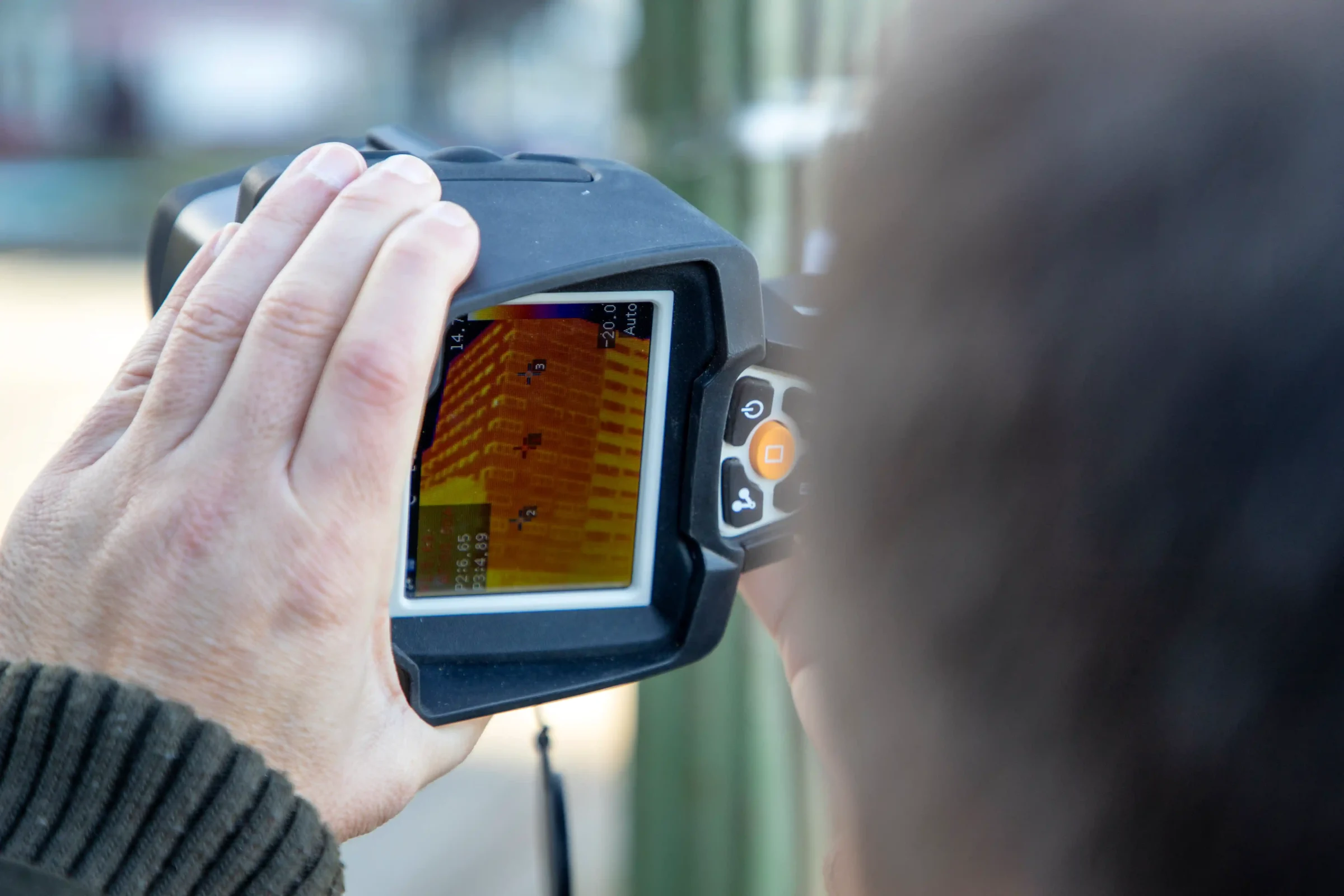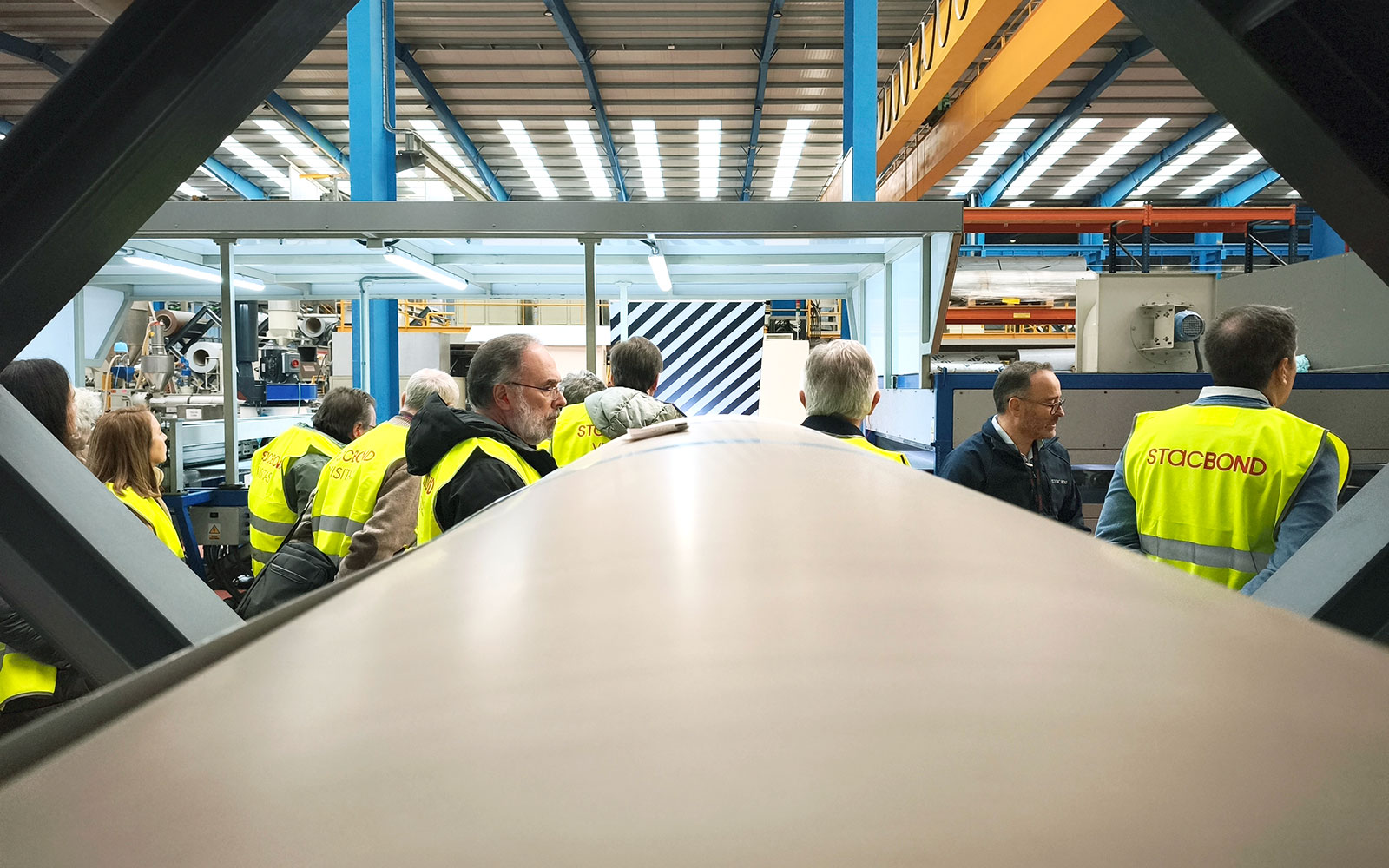Analysis of façades with thermographic cameras: Advances in building diagnosis
Thermographic analysis of façades is a non-invasive diagnostic technique that uses infrared cameras to evaluate the thermal efficiency of buildings. This procedure is used to identify insulation and energy efficiency problems accurately and quickly.
What is thermographic analysis?
Infrared thermography allows you to visualise the thermal radiation emitted by the surface of buildings. Through a thermographic camera, images are captured showing temperature variations on the façade. These images, called thermograms, reveal areas of heat loss, thermal bridges, and insulation problems.
What is the thermographic analysis of façades for?
- Heat Loss Detection: identifies areas where heat is lost, which helps improve the energy efficiency of the building.
- Thermal Bridge Identification: detects areas where unwanted heat exchange occurs, commonly at joints and corners of the structure.
- Insulation Performance Assessment: to evaluate whether the thermal insulation is working properly.
- Structural Damage Prevention: helps identify moisture and condensation problems that can damage the structure in the long term.

What are the latest trends in thermographic analysis of façades?
Thermographic analysis technology has advanced significantly, incorporating new functionalities and improving the accuracy of the results. Drones equipped with infrared cameras allow thermographic analysis of large surfaces and tall buildings more easily and safely. These drones can capture images from different perspectives and heights, facilitating the inspection of areas which would otherwise be difficult to access.
There are also programs that allow the integration of thermography with BIM (Building Information Modeling) models, which provides a detailed thermal analysis in the design and maintenance phase of the building.
New higher resolution cameras improve thermogram quality and accuracy in identifying thermal problems. These cameras are able to detect very small temperature differences, allowing for a more accurate evaluation of the thermal performance of façades.
Another key trend is the integration of artificial intelligence (AI) and video analysis with thermal imaging cameras. This combination improves accuracy in event detection and allows faster and more appropriate responses. In addition, thermal imagers are increasingly adopting cloud-based technologies, enabling seamless integration with video management systems (VMS) both in the cloud and on-site, making remote monitoring and analytics easier.

What differences can be observed with a thermal imaging camera in a building with and without ventilated aluminum composite panel façades?
| Façade characteristics | No aluminum composite panel ventilated façade | With aluminum composite panel ventilated façade |
| Thermal distribution | Significant temperature variations throughout the surface. Inconsistent, with irregularly distributed hot and cold spots. | Uniform thermal distribution, with less temperature variations. More stable and homogeneous temperatures on the surface. |
| Heat losses | Heat losses concentrated around windows, doors and joints. | Less heat loss due to the insulating properties of the panel. |
| Thermal bridges | Clearly visible in joints, corners and junction points. They appear as high temperature lines indicating energy losses | Reduced visibility of thermal bridges due to continuous and homogeneous insulation. |
| Risk of condensation | Visible moisture formation in thermograms due to heat transfer | Less condensation areas, better humidity management |
| Surface temperature | High temperatures in thermograms indicate poor thermal efficiency in cold months. | Lower temperatures show good thermal insulation in cold months. |
| Energy efficiency | High energy consumption to maintain internal temperature | Reduction in energy consumption due to improved insulation |
| Insulation quality | Insufficient insulation visible in thermograms, greater heat transfer. | Effective insulation with uniform thermal distribution visible in thermograms |
The use of STACBOND aluminum composite panels in ventilated façades provides clear benefits in terms of thermal insulation and energy efficiency, which are perfectly reflected in thermograms.



